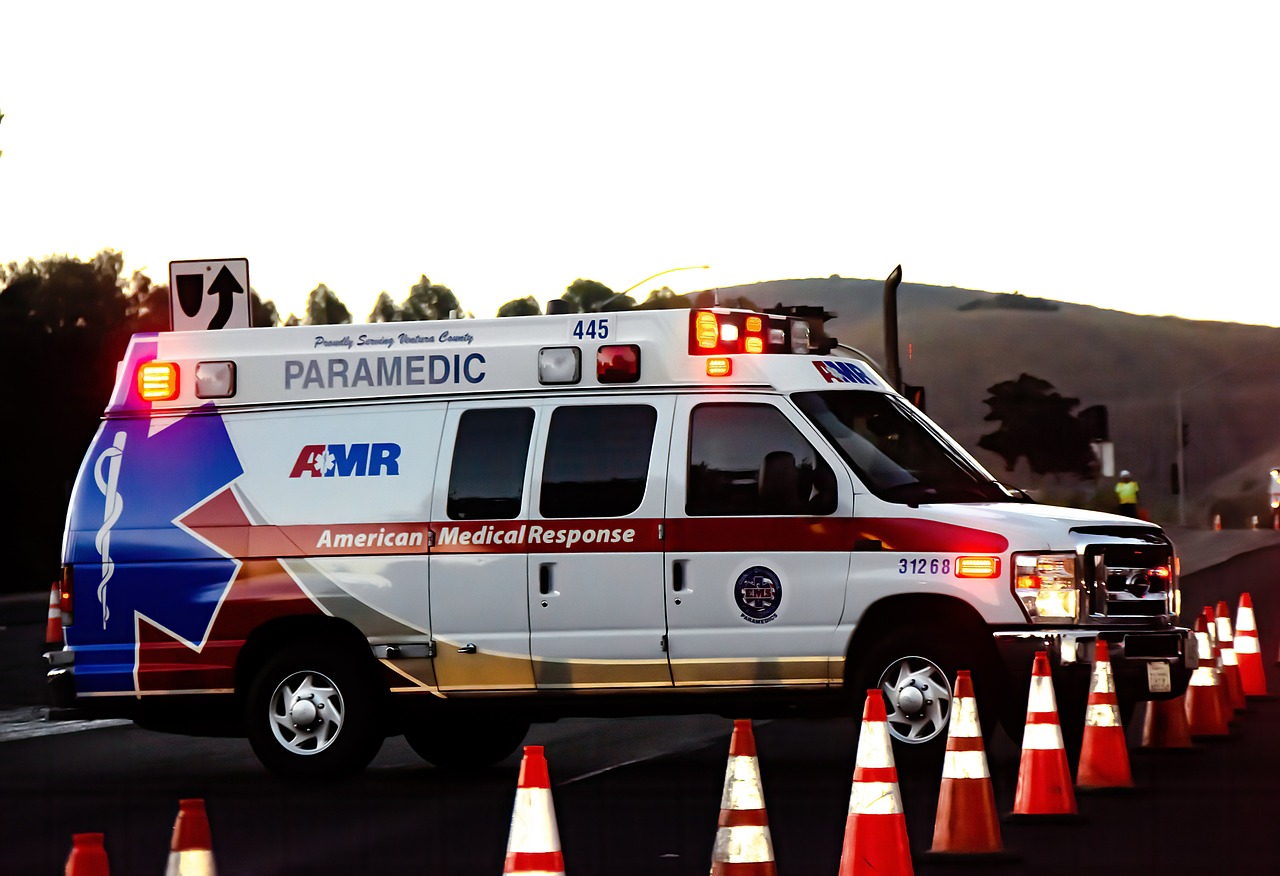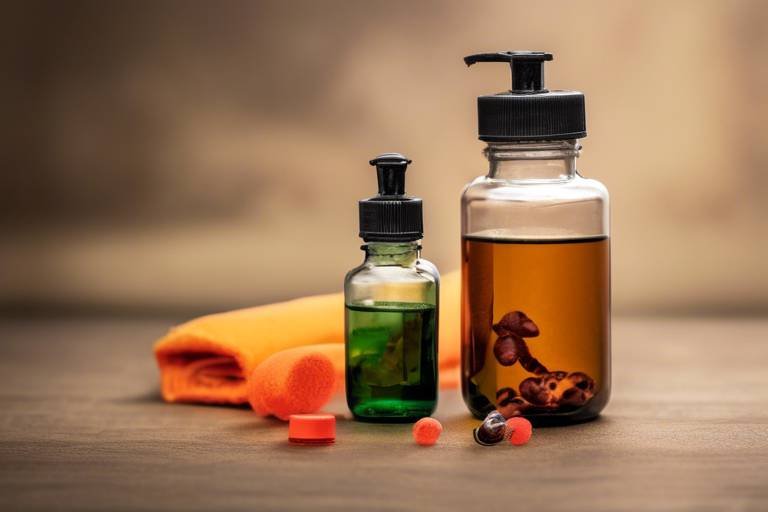How to Handle a Pet Emergency During Holidays
The holiday season is a time of joy, celebration, and sometimes, chaos. With all the festivities happening, it's easy to overlook the safety and well-being of our furry friends. As pet owners, we want to ensure that our pets remain safe and healthy, even amidst the hustle and bustle. But what happens if an emergency arises? The key is to be prepared and know how to act swiftly. This article provides essential tips and guidelines for pet owners to effectively manage emergencies involving their pets during the holiday season, ensuring both safety and peace of mind.
Understanding your pet's behavior is crucial. Just like you can tell when a friend is feeling off, your pet communicates its discomfort too. Look for signs such as excessive barking, hiding, changes in appetite, or unusual lethargy. These could be red flags indicating that something isn’t quite right. For instance, if your dog suddenly refuses to eat their favorite treat, it might be time to investigate further. Being attentive to these signals can make all the difference. Quick action could prevent a minor issue from escalating into a major emergency.
An emergency kit is vital for any pet owner. Think of it as your pet's safety net during the holidays. You wouldn't head out on a road trip without a spare tire, right? Similarly, having an emergency kit ensures you're ready for any situation that may arise. So, what should you include? Here are some essentials:
- First aid supplies
- Medications and dosages
- Bandaging materials
- Emergency contact information
By preparing this kit in advance, you’ll have peace of mind knowing you’re ready to tackle any pet emergency that may come your way.
Stocking your emergency kit with first aid supplies can be lifesaving. Just like you would have a first aid kit for your family, your pets deserve the same consideration. Essential items to include are antiseptic wipes, gauze pads, adhesive tape, and scissors. These supplies can help you manage minor injuries while waiting for professional help. Imagine your cat getting a small cut while playing—having the right supplies on hand can prevent infections and ease their pain until you can get them to the vet.
Knowing the right medications and dosages for your pet can be crucial in emergencies. It’s not just about having the medicine; it’s about knowing how to use it safely. Common medications that might be needed include antihistamines for allergic reactions and pain relief options. Always consult your veterinarian about what to keep on hand, as they can provide guidance tailored to your pet’s specific needs. Remember, administering the wrong dosage can lead to more harm than good, so be sure to have clear instructions available.
Proper bandaging techniques can prevent further injury. If your pet gets a cut, knowing how to bandage it correctly can minimize pain and protect them until professional help is available. Here’s a quick guide:
1. Clean the wound gently with water. 2. Apply an antiseptic solution. 3. Use gauze to cover the wound. 4. Secure with adhesive tape, ensuring it’s snug but not too tight.
Practicing these techniques can make you more confident in handling emergencies, allowing you to focus on your pet's comfort and safety.
Having quick access to important contact numbers is essential. Create a list of emergency contacts, including your veterinarian, local emergency vet clinics, and poison control hotlines. Store this list in a visible place, such as on your fridge or in your emergency kit. In the chaos of a pet emergency, the last thing you want to do is scramble for contact information. Having it readily available can save precious time and help you get your pet the help they need.
Finding emergency vet services is critical during holidays. With many regular veterinary offices closed or operating on reduced hours, knowing where to go in case of an emergency is vital. Start by researching local emergency veterinary clinics ahead of time. Check their hours, services offered, and reviews from other pet owners. This preparation can make a world of difference when you need immediate assistance.
Not all clinics are equipped for emergencies. When evaluating an emergency vet clinic, consider factors such as their facilities, available specialists, and the types of emergencies they handle. A well-equipped clinic can provide comprehensive care, ensuring your pet receives the best treatment possible. Don’t hesitate to ask questions when you visit or call—after all, your pet's health is on the line!
Preparing for a vet visit can save time. When heading to an emergency clinic, bring your pet’s medical records, any medications they are currently taking, and a list of symptoms you’ve observed. This information can help the vet make a quicker diagnosis. Also, if your pet has a favorite toy or blanket, bringing it along can provide comfort during a stressful time.
Q: What should I do if my pet eats something toxic?
A: Immediately call your veterinarian or a poison control hotline. They will guide you on the next steps to take.
Q: How can I tell if my pet is in pain?
A: Look for signs such as whining, limping, excessive grooming of a specific area, or changes in behavior. If in doubt, consult your vet.
Q: Is it necessary to have an emergency kit for my pet?
A: Yes! Just like you have one for yourself, having an emergency kit for your pet can be crucial during unexpected situations.

Recognizing Signs of Distress
Understanding your pet's behavior is crucial, especially during the bustling holiday season when distractions abound and the atmosphere can be overwhelming. Pets, much like humans, can experience stress and anxiety, which may manifest in various ways. It's essential to be vigilant and recognize these signs early on to ensure the well-being of your furry friend. So, how can you tell if your pet is in distress? Let's dive into some common indicators!
First and foremost, changes in behavior are often the most noticeable signs. If your usually playful pup suddenly becomes lethargic or your curious cat hides away in a corner, it could indicate something is amiss. Pay attention to changes in appetite as well; a pet that refuses to eat or drink can be a red flag. Additionally, excessive barking, whining, or meowing can signal discomfort or anxiety.
Another important aspect to consider is physical symptoms. Look out for signs such as:
- Vomiting or diarrhea
- Excessive drooling
- Trembling or shaking
- Changes in breathing patterns (rapid or labored breathing)
- Visible injuries or swelling
These physical signs can be indicative of underlying health issues that require immediate attention. It's also worth noting that pets may exhibit signs of distress differently. For example, a dog might become overly clingy or seek out a quiet place, while a cat might display aggression or avoidance behavior. Understanding your pet's unique personality will help you better identify when something isn't right.
Furthermore, environmental changes can also impact your pet's emotional state. The holidays often bring about new experiences, from the arrival of guests to the introduction of festive decorations. Some pets may feel overwhelmed by these changes, leading to anxiety or fear. If you notice your pet acting out of character during the holidays, take a moment to assess their environment and make adjustments to help them feel more secure.
In conclusion, being aware of your pet's behavior and physical condition is vital for recognizing signs of distress. By staying observant and responsive, you can ensure that your beloved companion remains safe and comfortable, even amidst the holiday chaos. Remember, if you ever have doubts about your pet's health, consulting a veterinarian is always the best course of action.
Q: What should I do if I notice signs of distress in my pet?
A: If you observe any concerning signs, it's important to consult with your veterinarian as soon as possible. They can provide guidance and determine if further medical attention is needed.
Q: How can I help my pet feel more comfortable during the holidays?
A: Create a safe space for your pet away from the holiday festivities. Ensure they have access to their favorite toys, blankets, and a quiet area where they can retreat if they feel overwhelmed.
Q: Are there specific signs that indicate a pet emergency?
A: Yes, some signs that may indicate an emergency include difficulty breathing, severe vomiting or diarrhea, loss of consciousness, or visible injuries. If you notice any of these, seek emergency veterinary care immediately.

Preparing an Emergency Kit
When it comes to our furry friends, being prepared for the unexpected is crucial, especially during the holiday season when festivities can sometimes lead to unforeseen pet emergencies. Imagine the chaos of a holiday gathering, with guests bustling about, and suddenly your pet gets into something they shouldn’t have. That’s where an emergency kit becomes your best ally. It’s like having a superhero in your corner, ready to swoop in and save the day!
Your emergency kit should be tailored specifically for your pet's needs and should be easily accessible. Think of it as a pet safety toolbox. Here are some essential items that you should consider including:
- First Aid Supplies: Just like humans, pets can get hurt too. Stock your kit with items such as gauze, adhesive tape, antiseptic wipes, and tweezers. These can be lifesavers in case of minor injuries.
- Medications: Keep a stash of any regular medications your pet needs, along with a list of dosages. This can be crucial during a panic-filled moment.
- Food and Water: Pack some extra food and water, especially if you’re traveling. You never know when you might get stuck somewhere longer than expected.
- Leash and Muzzle: In emergencies, pets can be scared and unpredictable. A leash will help keep them safe, while a muzzle can prevent biting in case they’re in pain.
- Pet First Aid Book: A guide can provide you with quick instructions on how to handle various situations until you can get your pet to a vet.
Additionally, consider creating a pet profile that includes vital information such as your pet's medical history, allergies, and emergency contacts. This can be invaluable when you’re in a rush to get to the vet. You can keep this profile in your emergency kit or even have a digital copy on your phone.
Don’t forget to regularly check and update your emergency kit. Just like your favorite holiday recipes, the contents of your kit should be fresh and ready to go. Expired medications or spoiled food won’t do you any good in a crisis. Make it a habit to review your kit every few months, especially before the holiday season kicks off.
In summary, preparing an emergency kit for your pet is not just a precaution; it’s an essential part of responsible pet ownership. By ensuring you have the right supplies on hand, you can enjoy the holidays with peace of mind, knowing that you’re ready for anything that comes your way. After all, your pet relies on you for their safety and well-being, and being prepared is the best gift you can give them!
First Aid Supplies
When it comes to our furry friends, being prepared for any situation is key, especially during the bustling holiday season. Just like we would pack a first aid kit for ourselves, our pets deserve the same level of care and attention. Imagine a scenario where your beloved pet accidentally ingests something harmful or suffers a minor injury while you're busy entertaining guests. Having a well-stocked first aid kit can mean the difference between a minor hiccup and a major crisis.
Your pet's first aid kit should include a variety of supplies that cater specifically to their needs. Think of it as a safety net; the more prepared you are, the more peace of mind you'll have. Here are some essential items to consider:
- Gauze pads and bandages: These are essential for covering wounds and stopping bleeding. Make sure to have different sizes on hand.
- Antiseptic wipes: These can help clean wounds and prevent infections.
- Adhesive tape: This is useful for securing bandages in place.
- Scissors: A good pair of scissors can be invaluable for cutting gauze or tape.
- Thermometer: Knowing your pet's normal temperature can help you detect fever.
- Hydrogen peroxide: This can be used to induce vomiting if instructed by a vet.
- Pet-safe pain relief: Always consult with your veterinarian about what medications are safe for your pet.
Each item plays a crucial role in ensuring your pet receives immediate care when needed. Just like a superhero's utility belt, your first aid kit should be equipped to handle a variety of emergencies. However, it's not just about having the supplies; knowing how to use them effectively is equally important.
For instance, when dealing with wounds, it's vital to clean the area gently before applying any bandages. You wouldn’t want to trap dirt and bacteria inside, right? Additionally, if your pet experiences a more serious injury, such as a deep cut or a broken bone, these supplies can help stabilize the situation until you reach a veterinary clinic.
Now, you might be wondering, how do I know if my pet needs immediate attention? Well, understanding the signs of distress is essential. If your pet is limping, whining, or showing unusual behavior, it’s time to take action. Remember, you are their advocate, and being proactive can save them from unnecessary pain.
In conclusion, having a comprehensive first aid kit is not just a precaution; it’s a necessity for any pet owner, especially during the holiday season when accidents can happen more frequently. By preparing in advance, you ensure that you can act swiftly and effectively in case of an emergency, providing your furry friend with the best chance for a quick recovery.
Q: What should I include in my pet's first aid kit?
A: Your pet's first aid kit should include gauze pads, antiseptic wipes, adhesive tape, scissors, a thermometer, hydrogen peroxide, and pet-safe pain relief. Always consult your vet for specific recommendations.
Q: How do I know if my pet needs emergency care?
A: Look for signs of distress such as limping, excessive whining, or unusual behavior. If you notice any of these signs, it’s best to seek veterinary assistance immediately.
Q: Can I use human medications on my pet?
A: No, many human medications can be toxic to pets. Always consult your veterinarian before giving any medication to your pet.
Medications and Dosages
When it comes to our furry friends, being prepared for emergencies is not just about having a first aid kit; it also involves knowing the right medications to have on hand and understanding the appropriate dosages. Emergencies can strike at any moment, especially during the holiday season when our pets might be exposed to new foods, decorations, or even stress from visitors. Having a basic understanding of what medications your pet might need can make a world of difference in a crisis.
First and foremost, it’s crucial to consult your veterinarian before administering any medication to your pet. Each animal is unique, and what works for one might not be suitable for another. Your vet can provide you with a personalized list of medications that are safe for your pet, along with the correct dosages based on their weight, age, and health condition. For example, common medications that pet owners should consider include:
- Antihistamines: Useful for allergic reactions, but be sure to get the right type and dosage from your vet.
- Pain relievers: Non-steroidal anti-inflammatory drugs (NSAIDs) can be helpful, but human medications like ibuprofen are toxic to pets.
- Antibiotics: These are essential for treating infections, but must be prescribed by a vet.
- Activated charcoal: This can be used to treat certain types of poisoning, but timing is critical.
To help you keep track of the medications and their dosages, consider creating a simple table that lists each medication along with the recommended dosage. Here’s a sample format:
| Medication | Dosage | Usage |
|---|---|---|
| Diphenhydramine (Benadryl) | 1 mg per pound of body weight | Allergic reactions |
| Carprofen (Rimadyl) | 2 mg per pound of body weight | Pain relief |
| Amoxicillin | 10 mg per pound of body weight | Infection treatment |
| Activated Charcoal | 1-3 grams per 10 pounds of body weight | Poisoning treatment |
Remember, this table is just a guideline and should not replace professional veterinary advice. Always double-check with your vet before administering any medication. Additionally, it’s important to have a way to measure dosages accurately; using a syringe or a scale can help ensure that you’re giving the right amount.
In the hustle and bustle of the holidays, it’s easy to overlook the importance of keeping medications organized. Consider designating a specific spot in your emergency kit for pet medications, making it easier to access them quickly in case of an emergency. Also, keep track of expiration dates and replace any expired medications promptly.
Lastly, familiarize yourself with the signs that indicate your pet may need medication. Symptoms like excessive panting, vomiting, or lethargy can signal that something is wrong. Being proactive and having the right medications on hand can save precious time and potentially save your pet's life during those frantic moments.
Q: What should I do if my pet ingests something toxic?
A: Immediately contact your veterinarian or an emergency animal poison control hotline. Do not wait for symptoms to appear.
Q: How can I tell if my pet is in pain?
A: Look for signs like whimpering, excessive grooming of a specific area, changes in appetite, or withdrawal from social activities.
Q: Can I use human medications on my pet?
A: Some human medications can be safe for pets, but many are toxic. Always consult with your veterinarian before giving any medication.
Q: How often should I check my pet's emergency kit?
A: It's a good idea to review your pet's emergency kit at least every six months, ensuring that all items are up to date and in good condition.
Bandaging Techniques
When it comes to handling a pet emergency, knowing the proper can make a world of difference. Imagine your furry friend has a cut or scrape, and you’re faced with the task of protecting that wound until you can get to the vet. It’s essential to act quickly and effectively. First and foremost, you should ensure that your pet is calm. A scared or agitated pet can make the bandaging process more difficult and even dangerous for both of you. So, take a moment to soothe your pet with gentle words and a calm touch.
Once your pet is calm, gather your supplies. You will need:
- Gauze pads or sterile dressings
- Adhesive tape or self-adhering bandage
- Scissors
- Antiseptic solution
- Elastic bandage (if necessary)
Now, let’s dive into the steps for effective bandaging:
- Clean the Wound: Start by gently cleaning the wound with an antiseptic solution. This step is crucial to prevent infection. Make sure to remove any debris or dirt.
- Apply a Dressing: Place a sterile gauze pad over the wound. Ensure it covers the entire area to provide adequate protection.
- Secure the Dressing: Use adhesive tape or a self-adhering bandage to secure the dressing in place. Be careful not to wrap it too tightly, as this can restrict blood flow.
- Check for Comfort: After bandaging, observe your pet. If they seem uncomfortable, you may need to adjust the bandage. A good rule of thumb is to ensure you can fit one or two fingers under the bandage.
It's also important to monitor the bandage regularly. Change it if it becomes wet or soiled, and keep an eye on the wound for any signs of infection, such as swelling, redness, or discharge. If you notice any of these symptoms, it’s time to head to the vet.
Lastly, remember that bandaging is not just about protecting the wound; it’s also about keeping your pet calm and comfortable. Use treats and gentle reassurance to help them feel at ease during this stressful time. By following these simple yet effective bandaging techniques, you can ensure that your pet remains safe and protected until professional help is available.
- How long should I keep the bandage on? Generally, you should keep the bandage on until the wound has healed, but it’s essential to check with your vet for specific recommendations based on the injury.
- Can I use human bandages on my pet? While some human bandages can be used, it's best to use products specifically designed for pets to avoid any adverse reactions.
- What if my pet keeps trying to remove the bandage? If your pet is persistent, consider using an Elizabethan collar to prevent them from reaching the bandage.
Contact Information
In the whirlwind of holiday festivities, the last thing you want is to scramble for important contact numbers when your furry friend is in distress. Having a well-organized list of emergency contacts can be a lifesaver. It’s like having a safety net; you may not need it often, but when you do, it’s invaluable. Start by compiling a list that includes:
- Your regular veterinarian: They know your pet's history and can provide immediate advice.
- Emergency veterinary clinics: These are crucial for after-hours care.
- Animal poison control hotline: Quick access to experts can save your pet's life if they ingest something harmful.
- Local animal hospitals: Sometimes, they might have specialists that can help in urgent situations.
Make sure this list is easily accessible. You can keep it on your refrigerator, in your phone, or even in your pet's emergency kit. Consider creating a small, laminated card that you can carry in your wallet or purse. This way, in a moment of panic, you won’t have to dig through your phone or remember where you wrote everything down.
Additionally, it’s wise to familiarize yourself with the locations of these clinics ahead of time. During the holiday season, traffic can be chaotic, and you don’t want to waste precious minutes trying to find the right place. A quick online search or a phone call can help you identify the nearest emergency vet services. You might even want to visit a few clinics beforehand to get a sense of their facilities and staff. This familiarity can ease your mind, knowing you’re prepared should an emergency arise.
Lastly, don’t forget to include emergency contacts for pet sitters or friends who may be watching your pet during the holidays. If something happens while you’re away, having someone who can step in and help is crucial. Remember, being prepared can turn a potentially stressful situation into a manageable one.
Q: What should I do if my pet eats something toxic during the holidays?
A: Immediately call the animal poison control hotline and your veterinarian. They can guide you on the next steps, which may include bringing your pet in for treatment.
Q: How can I keep my pet safe during holiday gatherings?
A: Ensure that guests know not to feed your pet table scraps, and keep harmful decorations, like tinsel and certain plants, out of reach. Always supervise your pet around new people and situations.
Q: What are some signs that my pet might be in distress?
A: Look for signs such as excessive barking, hiding, changes in appetite, vomiting, or lethargy. If you notice any of these symptoms, consult your veterinarian.

Emergency Vet Services
When the holiday season rolls around, the last thing any pet owner wants is to face an emergency. However, accidents happen, and knowing how to find can make a significant difference in your pet's outcome. The first step is to familiarize yourself with local veterinary clinics that offer 24/7 emergency services. Many regular veterinary practices have limited hours during the holidays, so it’s crucial to know where to go if your furry friend needs immediate care.
To locate nearby emergency veterinary clinics, consider using online resources or mobile apps that specialize in pet care. Websites like PetFinder or VetStreet can provide you with a list of emergency vets in your area. Additionally, don’t hesitate to ask your regular vet for recommendations. They often have partnerships with emergency clinics and can guide you to the best options.
When you arrive at an emergency vet clinic, be prepared for a different experience compared to a regular vet visit. Emergency clinics are designed to handle urgent cases, which means they may prioritize patients based on the severity of their conditions. You might find yourself waiting if other pets require immediate attention. To ensure a smooth visit, it's helpful to have the following information ready:
| Information to Prepare | Details |
|---|---|
| Your Pet's Medical History | Vaccination records, previous illnesses, and medications. |
| Contact Information | Your regular vet's contact details for reference. |
| Emergency Contacts | List of emergency contacts, including poison control. |
Always remember that time is of the essence in emergencies. The quicker you can relay your pet’s symptoms and medical history to the vet, the faster they can begin treatment. Don’t be afraid to ask questions about the treatment plan, costs, and what to expect during your visit. Being informed can help ease your anxiety and ensure your pet receives the best possible care.
Lastly, it’s a good idea to have a designated pet emergency bag ready to go at all times. This bag can include essential items such as your pet's medical records, a list of medications, and any favorite toys or blankets that can provide comfort during a stressful situation. Having this bag packed and easily accessible can save precious time in an emergency.
- What should I do if my pet has an emergency during the holidays?
Immediately contact an emergency vet clinic and provide them with your pet’s symptoms and medical history. - How can I find an emergency vet clinic?
Use online resources, mobile apps, or consult your regular vet for recommendations. - What should I bring to the emergency vet?
Bring your pet’s medical records, a list of medications, and any relevant contact information.
Choosing the Right Clinic
When it comes to your furry friend’s health, especially during the holiday season, choosing the right emergency veterinary clinic can feel like picking a needle from a haystack. With the festive chaos, you might find yourself in a pinch, needing immediate care for your pet. So, how do you ensure that you’re heading to the best clinic available? It all starts with a little research and preparation.
First and foremost, you should consider the clinic's location. Emergencies are stressful enough without the added anxiety of a long drive. Ideally, you want a clinic that’s close to your home or your holiday destination. A quick online search can help you identify the nearest emergency veterinary services. Look for clinics that are open 24/7, as emergencies don’t adhere to a schedule, and neither should your vet!
Another critical factor is the services offered. Not every clinic is equipped to handle every type of emergency. Some may specialize in specific areas such as trauma, poisoning, or surgery. When researching, make sure to check if the clinic provides the necessary services for your pet’s potential needs. For instance, if your pet has a pre-existing condition, ensure the clinic has experience dealing with such cases. You can often find this information on their website or by calling ahead.
Additionally, consider the staff qualifications. You want to ensure that your pet will be in the hands of experienced professionals. Look for clinics that have certified veterinarians and trained veterinary technicians. Reading online reviews can give you insight into other pet owners' experiences. Websites like Yelp or Google Reviews can be particularly helpful in gauging the quality of care provided by a clinic.
Don’t forget to ask about the facility’s equipment. A well-equipped clinic can make all the difference in an emergency situation. Inquire whether they have essential diagnostic tools like X-rays, ultrasound machines, and laboratory services on-site. This can significantly speed up the process of diagnosing and treating your pet, which is crucial when every second counts.
Lastly, consider the cost of services. While you shouldn’t skimp on quality care, it’s also essential to know what to expect financially. Many clinics provide an estimate of costs for various procedures. It’s wise to ask about payment options as well, especially if you anticipate needing substantial care. Some clinics even offer payment plans or can direct you to pet insurance providers that can help alleviate costs.
In summary, when choosing the right emergency vet clinic, keep these key points in mind:
- Location: Ensure it’s close to home.
- Services: Confirm they can handle your pet’s potential emergencies.
- Staff Qualifications: Look for experienced and certified professionals.
- Facility Equipment: Check for necessary diagnostic tools.
- Cost: Understand the pricing and payment options.
By taking the time to research and prepare ahead of time, you can ensure that you’re ready to act swiftly and confidently in the event of a pet emergency. Remember, your pet relies on you to make the best choices for their health and well-being, especially during the hectic holiday season!
Q: What should I do if my pet has an emergency during the holidays?
A: Stay calm, assess the situation, and head to the nearest emergency veterinary clinic. If possible, call ahead to let them know you’re coming.
Q: How can I find emergency vet clinics near me?
A: A quick online search or using veterinary directories can help you find nearby clinics. Make sure to check their hours of operation.
Q: What should I keep in my pet's emergency kit?
A: Essential items include first-aid supplies, medications, and a list of emergency contacts, including your regular vet and poison control.
Q: Are all veterinary clinics equipped for emergencies?
A: No, not all clinics are equipped to handle emergencies. Always check if the clinic has the necessary services and equipment before you need them!
What to Bring to the Clinic
When you're faced with a pet emergency, every second counts. It's crucial to be prepared and know exactly what to bring to the clinic. Imagine racing against time, your heart pounding, and your furry friend in distress. The last thing you want is to fumble around trying to remember what you need. So, let’s make sure you’re ready! Here’s a handy checklist of items to gather before you head out:
- Your Pet's Medical Records: Having a copy of your pet's medical history can provide valuable information to the veterinarian. This includes vaccination records, any pre-existing conditions, and previous treatments.
- Current Medications: If your pet is on medication, bring the actual bottles or a list of the medications, including dosages. This will help the vet understand what your pet has been taking and if any interactions could occur.
- Identification: Ensure your pet is wearing a collar with an ID tag that has your contact information. If your pet gets lost during the chaos of an emergency, this could be a lifesaver.
- Comfort Items: Bringing along a favorite blanket or toy can provide comfort to your pet in a stressful situation. It’s amazing how a familiar scent can soothe their nerves.
- Leash or Carrier: Depending on your pet's size, bring a sturdy leash or a carrier. This will help keep your pet secure and calm during transport.
In addition to these essentials, remember to stay calm and collected. Your pet can pick up on your anxiety, so taking deep breaths and reassuring them can make a world of difference. If you have time, jot down any specific symptoms your pet is showing, as this information will help the veterinary staff diagnose and treat your pet more effectively.
Lastly, don’t forget to bring your payment method! Emergency vet visits can be unexpected and costly, so having your credit card or cash ready can ease the process. Being prepared is not just about what you pack; it’s also about your mindset. Approach the situation with confidence and a sense of urgency, but also with a calm demeanor that will help keep your pet relaxed.
Q: What should I do if my pet has a medical emergency?
A: Stay calm and assess the situation. Gather your emergency kit, and if necessary, call your veterinarian or an emergency clinic for advice before heading out.
Q: How can I tell if my pet is in distress?
A: Look for signs such as excessive barking, whining, panting, or unusual behavior. If your pet is lethargic, has difficulty breathing, or shows signs of pain, it’s best to seek immediate veterinary care.
Q: Is it necessary to have an emergency kit for my pet?
A: Absolutely! Having an emergency kit prepared can save valuable time and ensure you have the necessary supplies on hand during a crisis.
Q: What if I can’t afford emergency vet care?
A: Talk to your vet about payment plans or look for local animal welfare organizations that may provide financial assistance for emergencies.
Frequently Asked Questions
- What should I do if my pet shows signs of distress during the holidays?
If your pet is showing signs of distress, such as excessive barking, hiding, or changes in eating habits, it's important to stay calm. Assess the situation and try to identify the cause of their distress. If it seems serious or if you're unsure, contact your veterinarian or an emergency vet clinic immediately for guidance.
- What items should I include in my pet's emergency kit?
Your pet's emergency kit should include essential items such as first aid supplies (bandages, antiseptic wipes), medications (prescribed by your vet), a list of emergency contacts, food and water, and any comfort items like a favorite toy or blanket. This preparation can make a big difference in a stressful situation.
- How can I find an emergency vet clinic during the holidays?
Finding an emergency vet clinic can be challenging, especially during the holidays. It's best to do some research ahead of time. You can search online for 24/7 emergency vet services in your area or ask your regular veterinarian for recommendations. Keep this information handy in your emergency kit.
- What should I bring with me to the emergency vet clinic?
When heading to the emergency vet clinic, bring your pet's medical records, any medications they are currently taking, a list of symptoms you’ve observed, and a leash or carrier for transport. This information can help the vet provide the best care for your pet.
- Are there specific first aid techniques I should know for my pet?
Yes! Basic first aid techniques, such as how to properly bandage a wound or perform CPR on a pet, can be invaluable. Consider taking a pet first aid course to familiarize yourself with these skills. Knowing how to act quickly can save your pet's life in an emergency.
- What medications are safe to use in a pet emergency?
Only use medications that have been prescribed by your veterinarian. Common emergency medications may include antihistamines for allergic reactions or specific pain relievers. Always consult your vet before administering any medication to ensure it’s safe and appropriate for your pet’s condition.


















